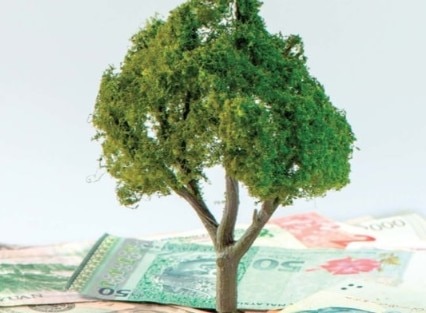While fossil reserves aren’t running out, our ability to burn them without limit may be, due to the fact that atmospheric concentrations of CO2 and equivalents are rapidly approaching the so-called 'carbon budget' – the level that if we go beyond is likely to lead to global warming in excess of the important 2 degrees Celsius level.
It is this that makes the United Nations COP21 meeting in Paris in December 2015 so important; it represents the first real opportunity to reach a legally binding agreement to tackle emissions, given that all parties, including the big emitters, are coming to the table with positive intentions, against a backdrop of an improving global economy.
We live though in an energy hungry world. Global GDP is set to treble by 2060, with two thirds of that growth coming from emerging markets which display significantly greater energy and carbon intensity per unit of GDP than developed markets. Feeding that energy demand and facilitating growth while minimizing emissions will take brave and coordinated decisions on the part of policymakers.
In this report, we examine the likely costs of inaction in terms of the potential liabilities from climate change to see whether we can afford not to act. We also examine whether the world can afford to act, by comparing the incremental costs of following a low carbon path to global GDP. Overall, we find that the incremental costs of action are limited (and indeed ultimately lead to savings), offer reasonable returns on investment, and should not have too detrimental an effect on global growth. Nevertheless, our energy choices will have a profound impact on countries, industries and companies, and we examine the implications of a low carbon future in terms of the stranded assets that are likely to result. Finally, we examine the solutions that financial markets and institutions can offer to facilitate this transition to a lower carbon world.
We are not climate scientists, nor are we trying to take sides in the global warming debate, rather we are trying to take an objective look at the economics of the discussion, to assess the incremental costs and impacts of mitigating the effects of emissions, to see if there is a 'solution' which offers global opportunities without penalizing global growth, whether we can afford it (or indeed we can afford not to), and how we could make it happen.
We believe that that solution does exist. The incremental costs of following a low carbon path are in context limited and seem affordable, the 'return' on that investment is acceptable and moreover the likely avoided liabilities are enormous. Given that all things being equal cleaner air has to be preferable to pollution, a very strong "Why would you not?" argument begins to develop.
With the global economy improving post-crisis, interest rates low, the large emitters coming to the table, investment capital keen, and public opinion broadly supportive, Paris offers a generational opportunity; one that we believe should be firmly grasped with both hands.
Energy Darwinism II
Why a Low Carbon Future Doesn’t Have to Cost the Earth
As Thomas Edison presciently pointed out to Henry Ford and Harvey Firestone in 1931, “We are like tenant farmers chopping down the fence around our house for fuel when we should be using nature’s inexhaustible sources of energy - sun, wind and tide. I’d put my money on the sun and solar energy. What a source of power! I hope we don’t have to wait until oil and coal run out before we tackle that.”
Click here to view the report in full.
Subscribe to Citi GPS
Keep up to date with our latest insights.
Sign up to receive the latest news from Citi.
Select Preferences


